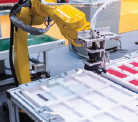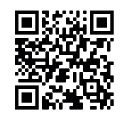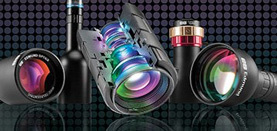What is Imaging?
Authors: Kyle Firestone
This is the introduction to the Imaging Resource Guide.
Over several decades, advancements in imaging technology have brought improvements to both the industrial and consumer market spaces and have accelerated growth in almost all industries including Factory Automation, Autonomous Systems, Logistics and Supply Chain Management, Life Sciences and Particle Analysis, Electronics and Semiconductors Inspection, Aerospace and Defense, and Metrology and 3D Measurement.
These advancements are seen every day in the form of high-quality consumer electronics like smartphones, 4K TVs, and personal computers, which have become easier to manufacture because of the improved reliability and repeatability that imaging systems afford to manufacturing processes.
The benefits of these advancements are also passed on to consumers when purchasing goods online, in the form of extremely reduced shipping and delivery times due to the simplification and optimization of logistical processes used in storage facilities and product warehouses.
These advancements have also enabled the high-throughput production of life-saving pharmaceuticals and have enabled the creation of novel, complex medical devices and procedures, which reduce patient recovery times and allow for patients to live much longer and healthier lives.
The fundamental components of an imaging system are illumination, an imaging lens, and a camera. Illumination is used to properly light the object and/or highlight features of interest. It helps the imaging system properly “see” the object. The imaging lens takes the object information and reproduces it on to a camera sensor. Although soft-ware and motion control may be needed to tie these three components together, choosing the proper three fundamental components helps to build the foundation of a successful imaging system.
It is important to understand how decisions and tradeoffs impact the final performance of the imaging system and the end application. Should a monochrome or color camera be used? What is the optimal illumination geometry? Does the camera come with a lens? Which lens works best for the application at hand? Whether your application is in factory automation, autonomous systems, life sciences, or something else, understanding the three fundamental components eases the development and deployment of these sophisticated imaging systems.
The use of controllers, algorithms, and sensors to automate repetitive tasks and reduce human oversight. Commonly automated tasks include sorting, inspection, and defect detection. In general, when thinking of “Machine Vision,” factory automation is what springs to mind.
Autonomous means having the ability to self-govern. Common autonomous systems include self-driving cars and trucks, flying, taxis, agriculture or farming robots, and delivery robotics. Vision systems are an incredibly important piece for the future of autonomous systems.
Logistics and Supply Chain Management
Logistic processes often use robots for automated warehousing. Robots perform OCR or scan barcodes on products to rapidly identify products on shelves or packaged and ready to be shipped.
Life Sciences and Particle Analysis
Life sciences include fields related to biology, medicine, physiology, and much more. Besides X-ray imaging and MRIs, this space also uses a wide range of imaging techniques like microscopy and special labeling to view, count, sort, and perform other cytometry methods on cells.
Electronics and Semiconductors Inspection
More circuitry can be integrated on semiconductors than ever before and flat panel displays have extremely high resolutions. To manufacture such complex devices, electronics and displays must be inspected for chip placement and defects at very high resolution.
Unmanned aerial, ground, and marine vehicles, fixed wing and rotorcraft aircrafts, and many other autonomous systems are used for target acquisition and designation, intelligence, surveillance, reconnaissance, and general situational awareness.
Information about an inspection sample like a characteristic dimension or colors must be measured with repeatable accuracy and reliability. Applications that require accurate measurement include time-of-flight imaging, scheimpflug scanning, 3D imaging, and LIDAR imaging.
Advanced diagnostics enable life-changing medical sciences and devices possible. These devices are used in life and medical sciences to improve the quality of and extend life.







































or view regional numbers
QUOTE TOOL
enter stock numbers to begin
Copyright 2023, Edmund Optics India Private Limited, #267, Greystone Building, Second Floor, 6th Cross Rd, Binnamangala, Stage 1, Indiranagar, Bengaluru, Karnataka, India 560038
California Consumer Privacy Acts (CCPA): Do Not Sell or Share My Personal Information
California Transparency in Supply Chains Act